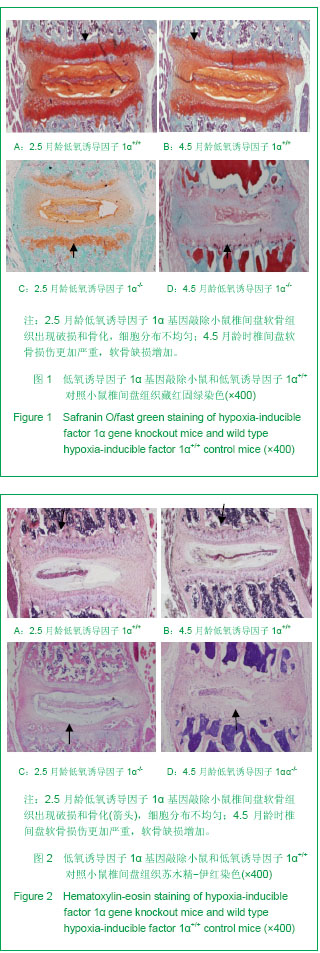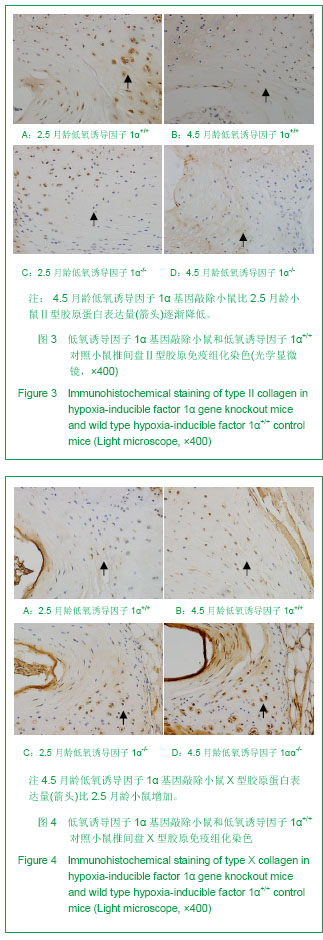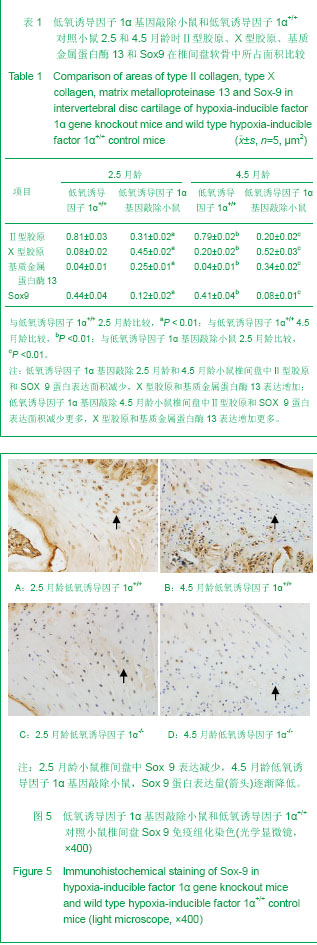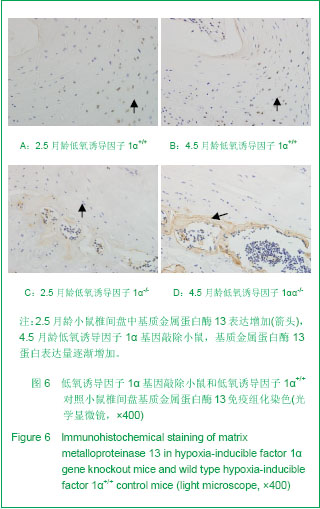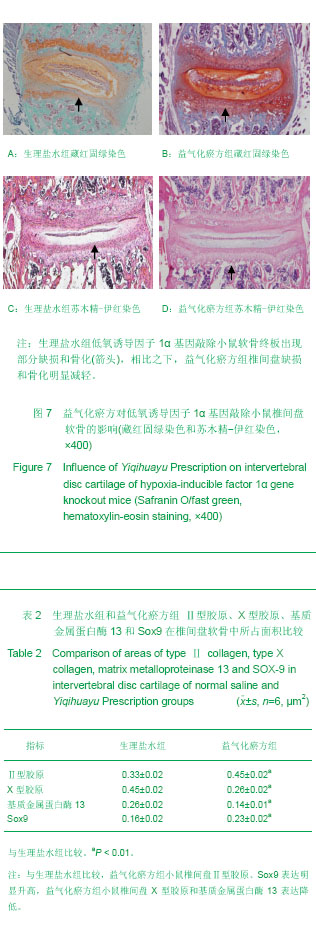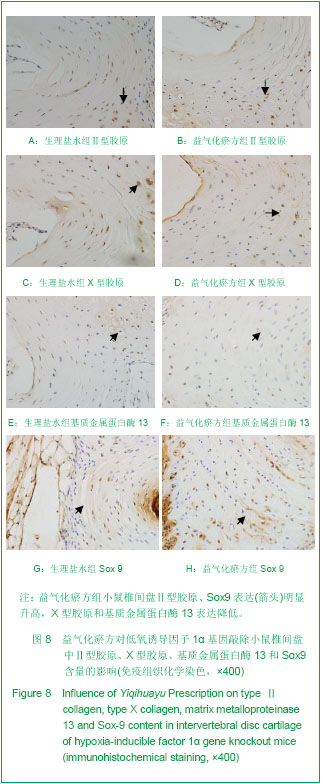中国组织工程研究 ›› 2013, Vol. 17 ›› Issue (24): 4481-4487.doi: 10.3969/j.issn.2095-4344.2013.24.016
• 组织构建与生物活性因子 tissue construction and bioactive factors • 上一篇 下一篇
低氧诱导因子1α基因敲除小鼠椎间盘退变与益气化瘀方的干预
王 晶1, 2,董芳芳1, 2,李晓锋1, 2,许金海2,舒 冰1, 2,施 杞1, 2,王拥军1, 2,周重建1, 2
- 1 上海中医药大学脊柱病研究所,上海市 200032
2 上海中医药大学附属龙华医院,上海市 200032
低氧诱导因子1α基因敲除小鼠椎间盘退变与益气化瘀方的干预
Wang Jing1, 2, Dong Fang-fang1, 2, Li Xiao-feng1, 2, Xu Jin-hai2, Shu Bing1, 2, Shi Qi1, 2, Wang Yong-jun1, 2, Zhou Chong-jian1, 2
- 1 Institute of Spine Disease, Shanghai University of Traditional Chinese Medicine, Shanghai 200032, China
2 Longhua Hospital, Shanghai University of Traditional Chinese Medicine, Shanghai 200032, China
摘要:
背景:低氧诱导因子1α与椎间盘软骨的正常生理及病理情况存在密切的关系,能够维持软骨组织在低氧环境中的正常活性,低氧诱导因子1α基因敲除后,软骨组织无法维持其正常低氧状态,导致软骨组织营养供应障碍,使软骨细胞处于异常缺血缺氧状态,长此以往,软骨组织会发生退变。 目的:观察低氧诱导因子1α条件性基因敲除小鼠椎间盘软骨退变情况,以及中药复方益气化瘀方对减缓低氧诱导因子1α基因敲除小鼠椎间盘软骨退变的作用。 方法:①将杂交繁殖获得同窝的低氧诱导因子1α+/+对照小鼠和低氧诱导因子1α基因敲除小鼠,分别分为为2.5月龄组和4.5月龄组(n=6)。分别在2.5、4.5月龄处死相应小鼠,取L4-6腰椎进行藏红固绿、苏木精-伊红染色及免疫组化相关指标染色及分析。②取12只0.5月龄低氧诱导因子1α基因敲除小鼠随机均分为生理盐水组和益气化瘀方组。灌胃给药2个月后,取两组小鼠的L4-6椎间盘进行藏红固绿、苏木精-伊红染色及免疫组化相关指标染色及分析。 结果与结论:①低氧诱导因子1α-/-小鼠:2.5月龄组椎间盘软骨组织出现破损和骨化,细胞分布不均匀,软骨细胞减少,椎间盘软骨中Ⅱ型胶原和Sox9表达降低,X型胶原、基质金属蛋白酶13表达增加;4.5月龄组椎间盘软骨损伤更加严重,Ⅱ型胶原蛋白与Sox9表达进一步降低, X型胶原、基质金属蛋白酶13表达进一步上升。②与生理盐水组比较,益气化瘀方干预后苏木精-伊红染色和藏红固绿染色显示软骨骨化和缺损减轻,软骨细胞数目较多,分布较均匀。与生理盐水组比较,益气化瘀方组椎间盘软骨中Ⅱ型胶原和Sox9的表达升高,X型胶原、基质金属蛋白酶13表达减少。说明低氧诱导因子1α基因敲除小鼠出现了椎间盘软骨退变,并且这种退变随着小鼠增龄而加重;益气化瘀方可以减轻低氧诱导因子1α基因敲除小鼠的椎间盘软骨退变。
中图分类号:
